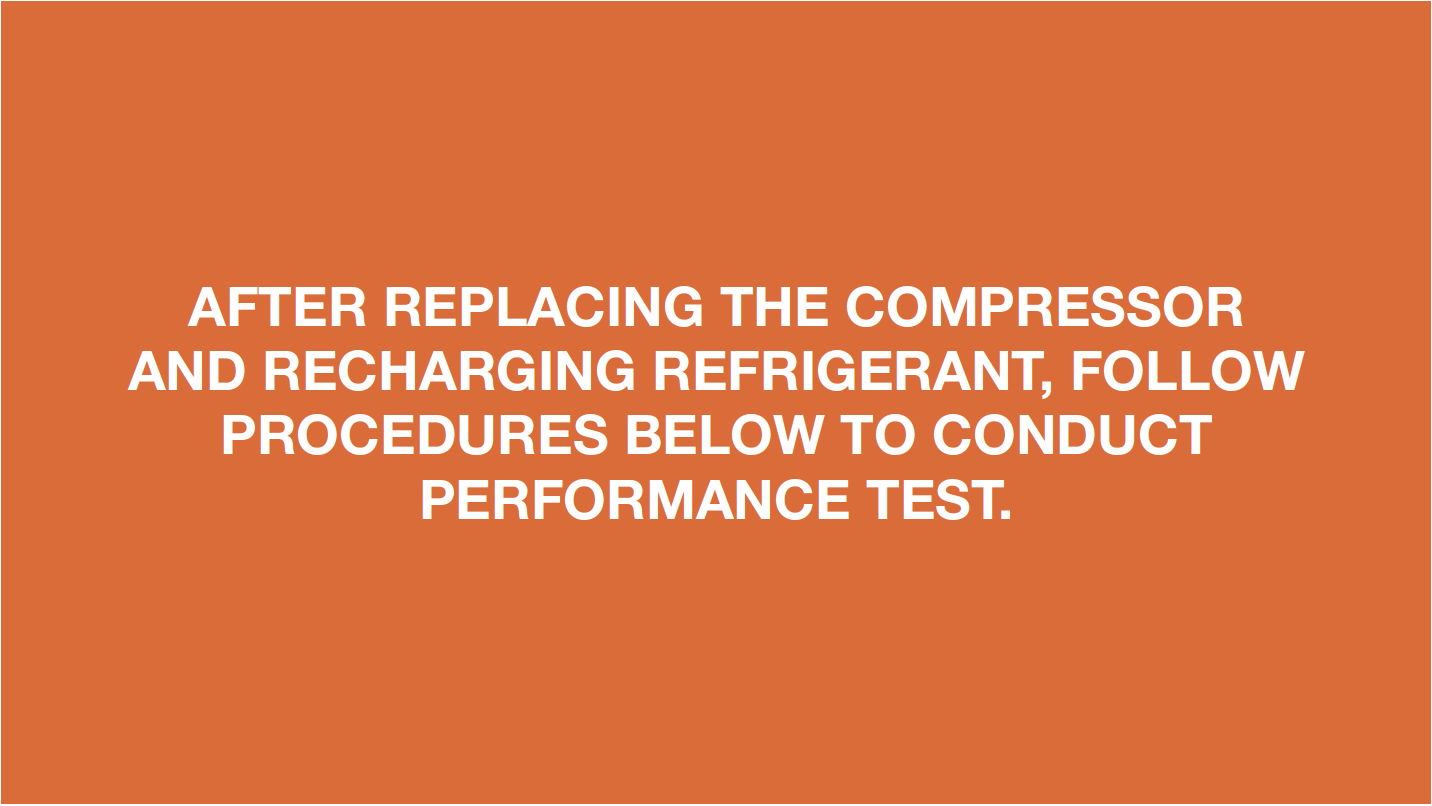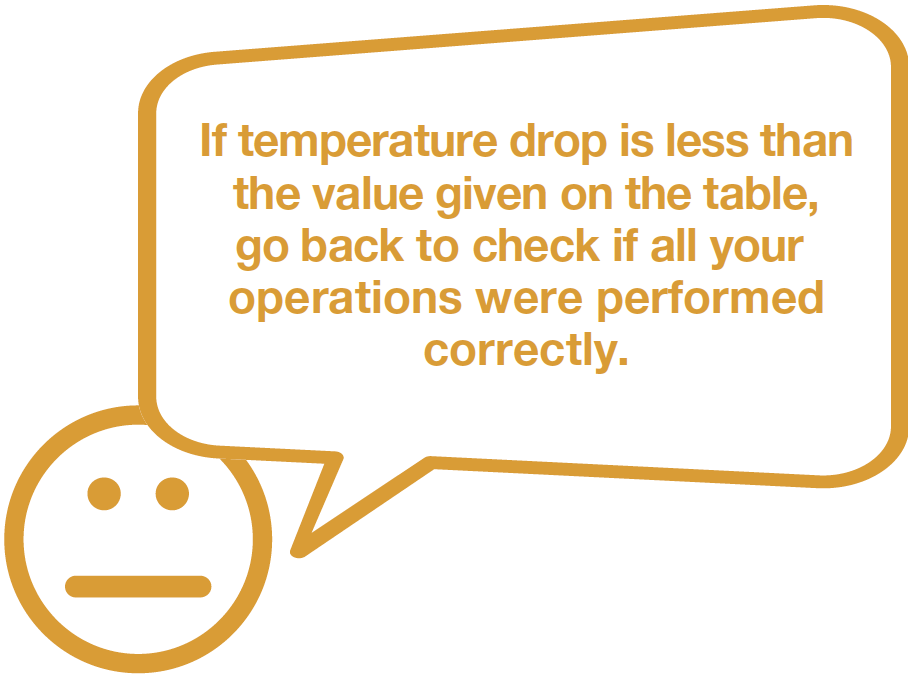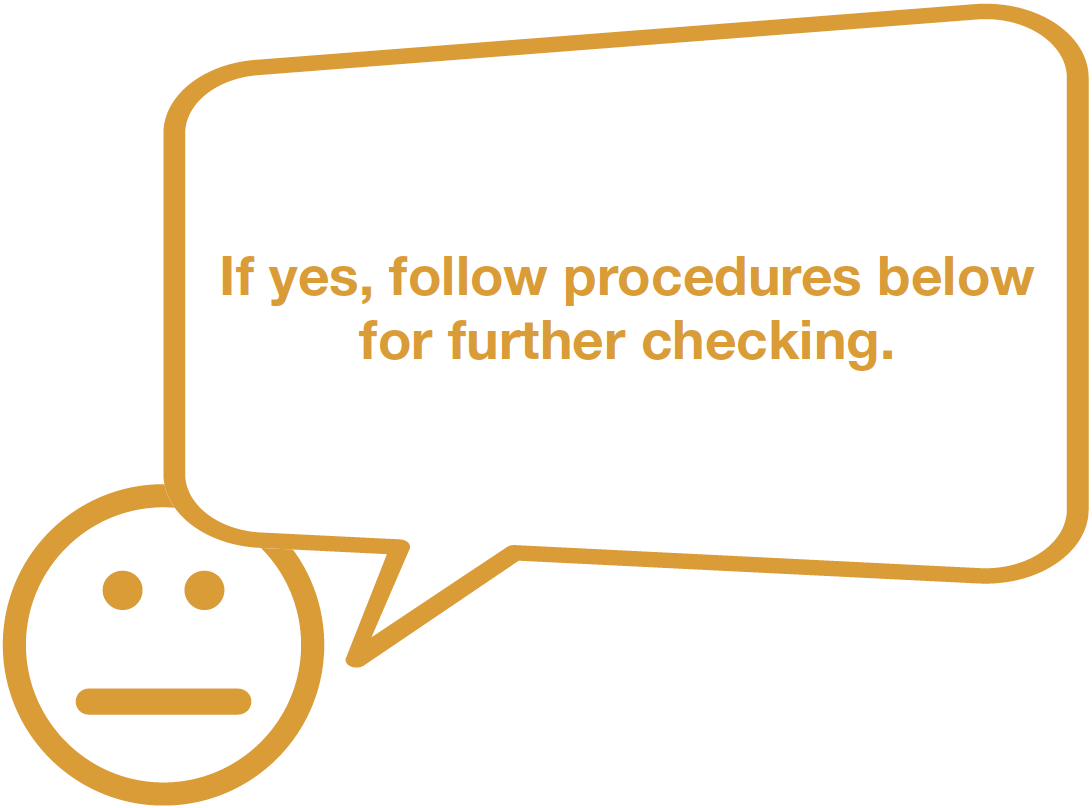

CHECK AND TEST 1
Step 1
Power on the appliance, measure voltage between phases of compressor with a multimeter.

Step 2
Take note of measured value.
Voltage between any two phases should be the same (100V~200V).

Step 3
Put hand onto
compressor for a
few minutes to feel if
compressor is jammed
or not.


DIAGNOSIS 1
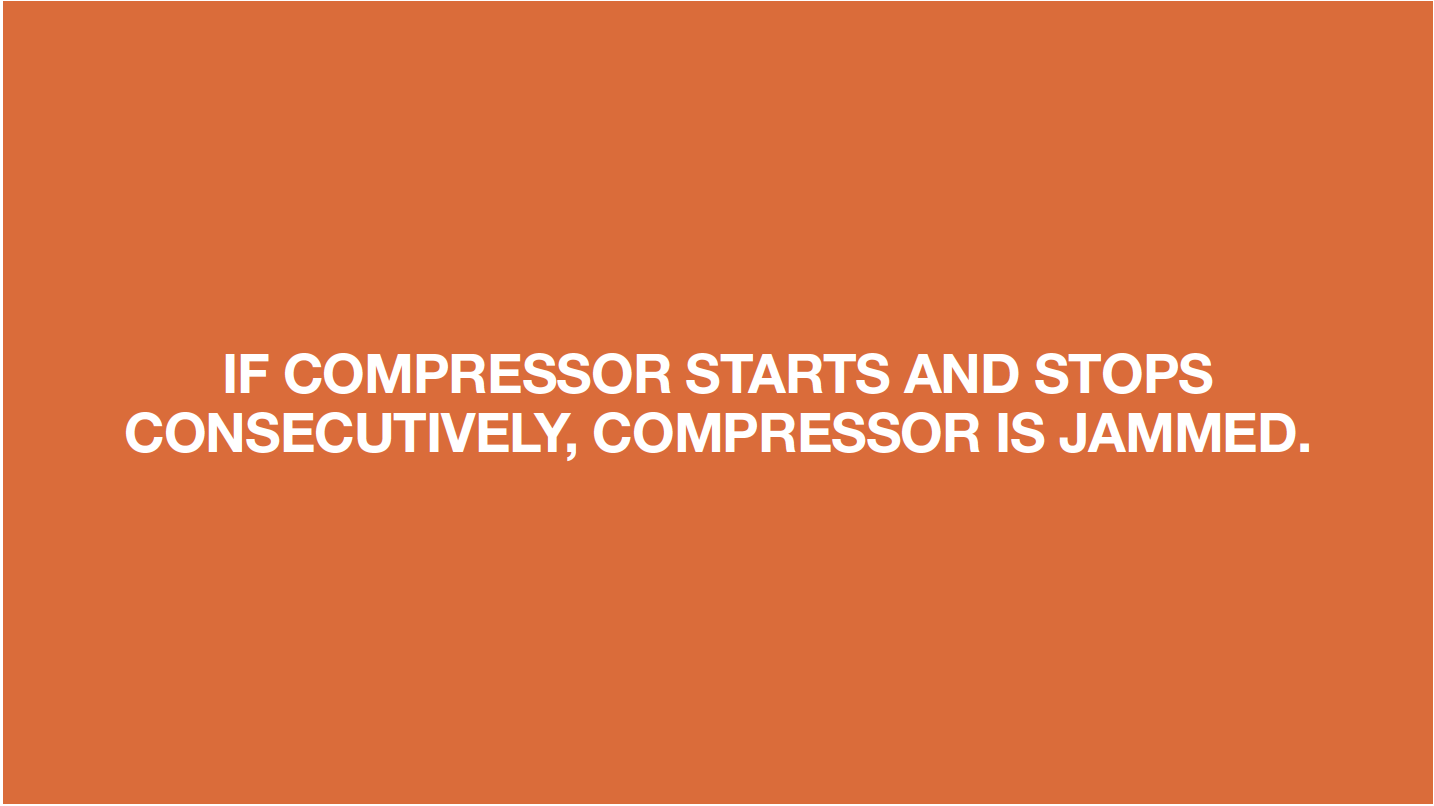

CHECK AND TEST 2
Step 1
Cut off capillary to discharge refrigerant.

Step 2
Cut off exhaust pipe and suction pipe.
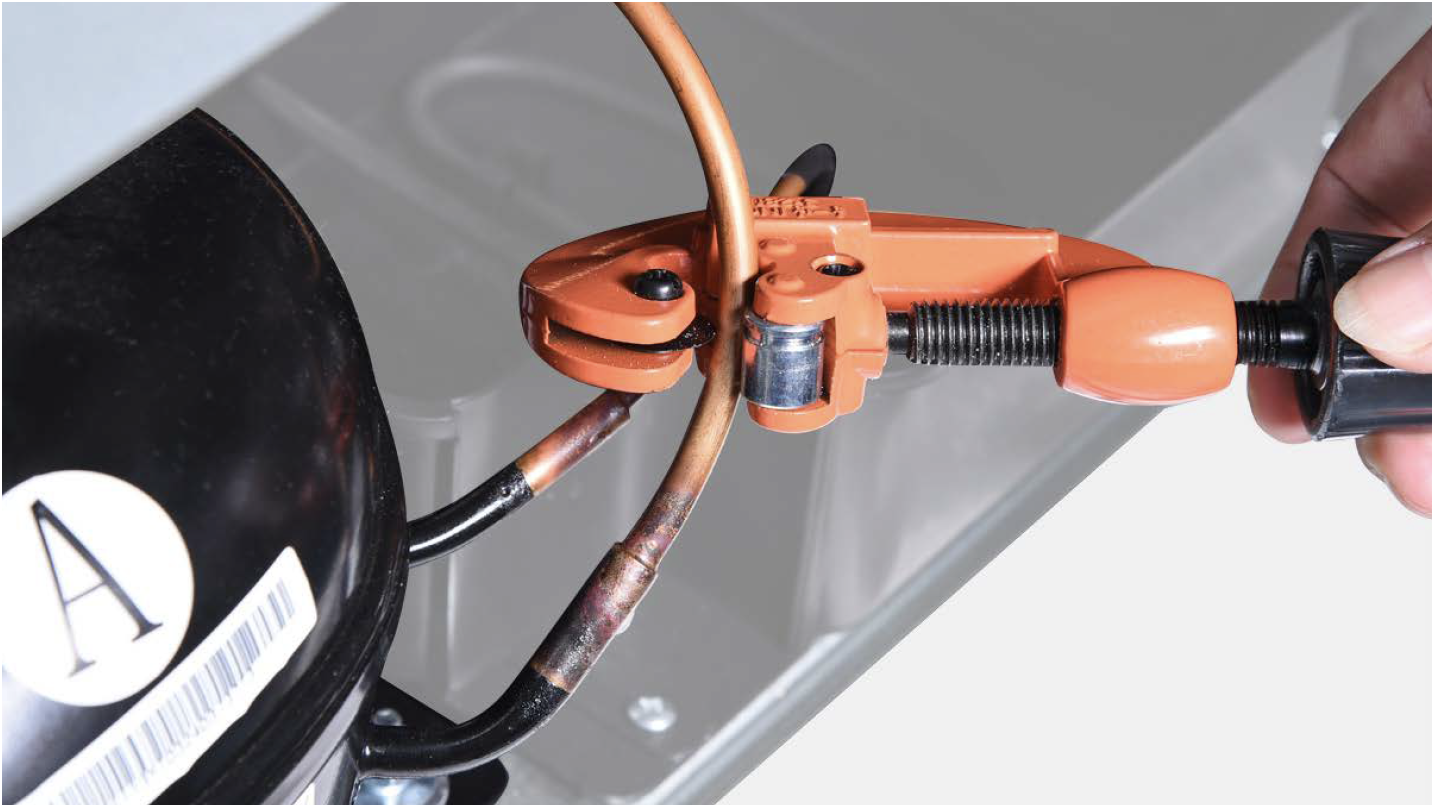
Step 3
Power on the compressor and test exhaust pressure coming from exhaust pipe with a piece of paper.


DIAGNOSIS 2
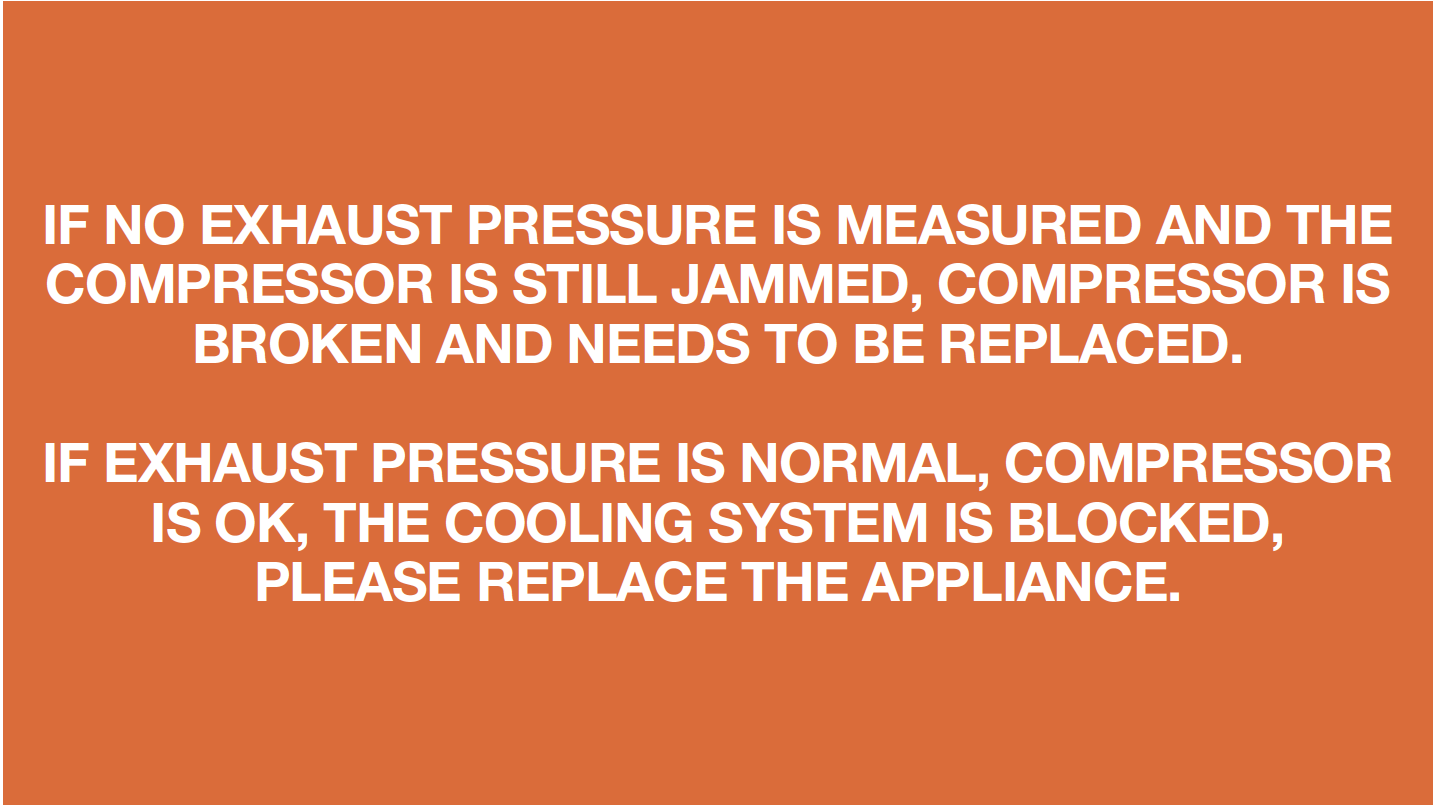
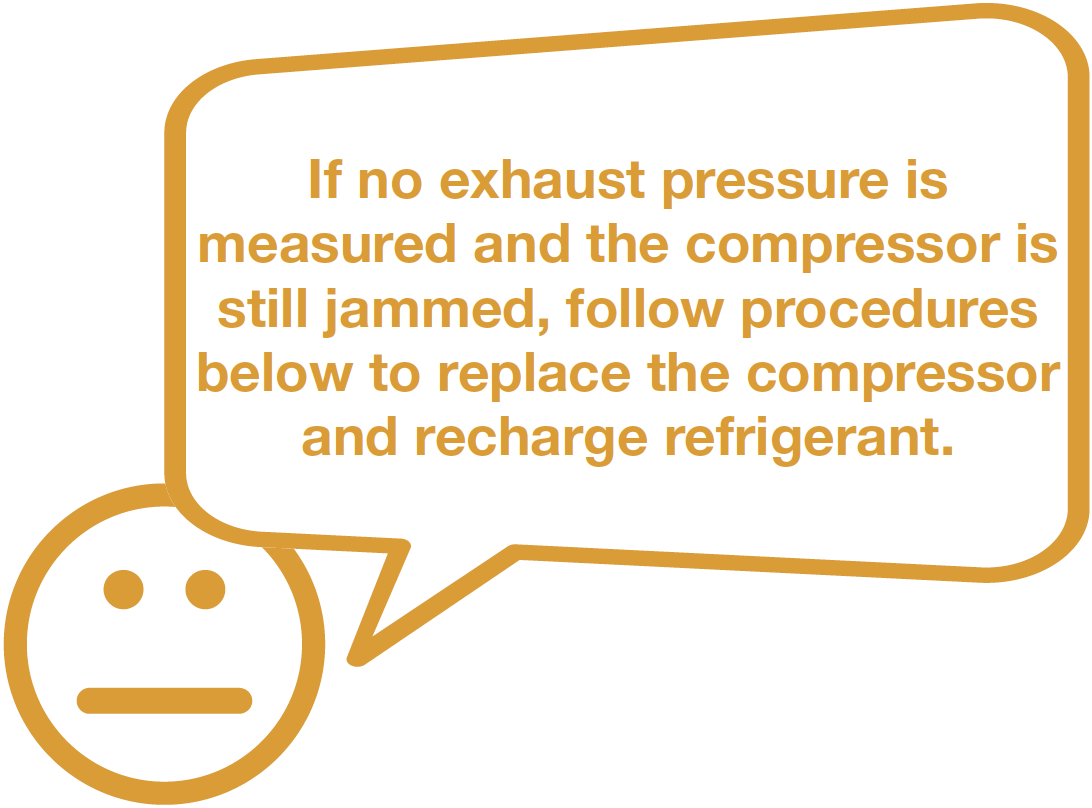
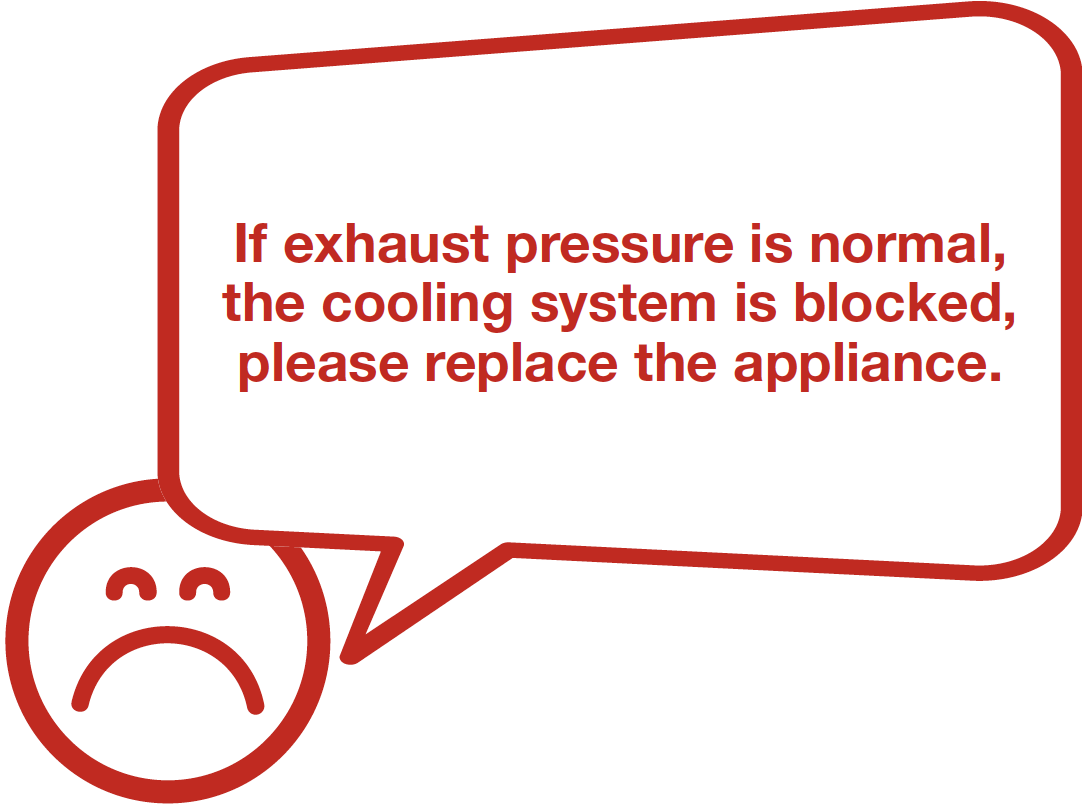

PROCEDURE 1
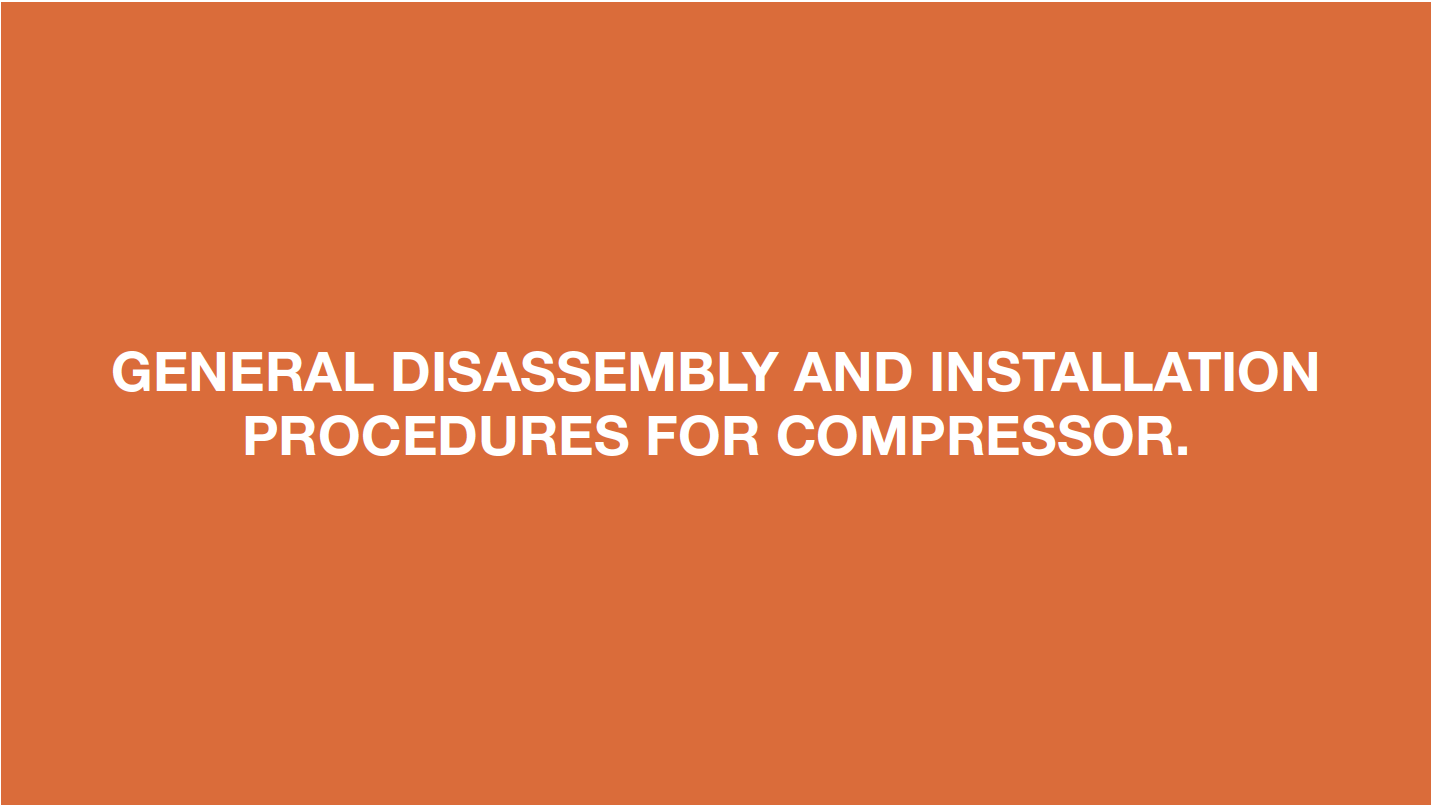
Step 1
Unscrew terminal cover.
Step 2
Remove terminal cover.

Step 3
Remove protector and starter.
Step 4
Unscrew earthing wire.

Step 5
Unscrew nut of compressor.

Step 6
Install a new compressor and tighten nuts onto compressor.

Step 7
Braze the joints of suction and exhasut pipes.

Step 8
Re-braze a copper tube onto compressor processing tube.

Step 9
Install quick connector onto copper tube.


PROCEDURE 2
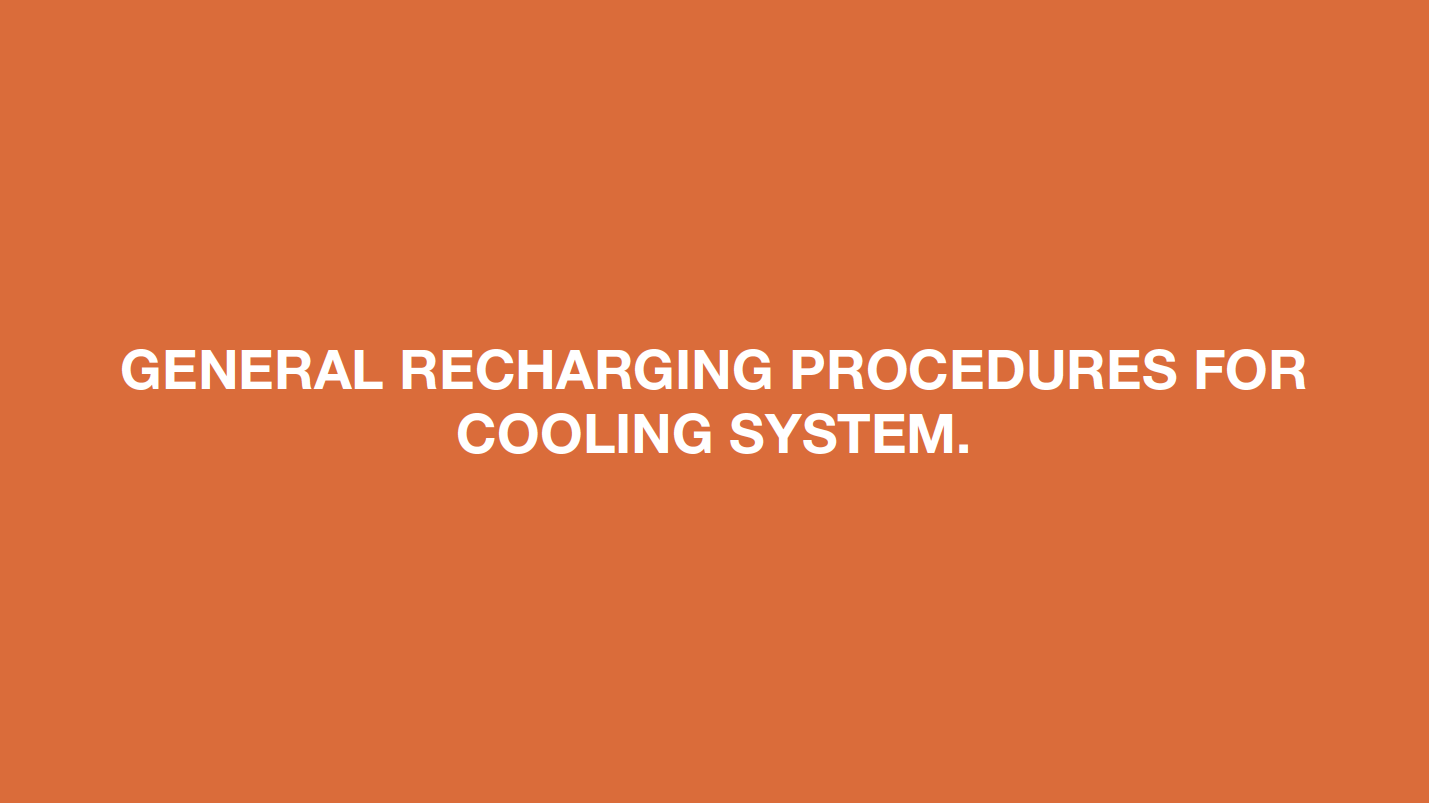
Step 1
Clean paint off brazed joint of drying-filter.
Step 2
Cut off drying-filter.

Step 3
Cut off capillary and shake to remove the cut end.
Step 4
Braze on a new drying-filter.

Step 5
Inject nitrogen (1.57Mpa)
through quick connector
into pipe for at least 3 min to blow remaining
refrigerant away.

Step 6
Add quick connector onto processing pipe of drying-filter.
Step 7
Perform leakage test on brazed joints of drying- filter and compressor processing pipe.

Step 8
Vacuum and recharge.
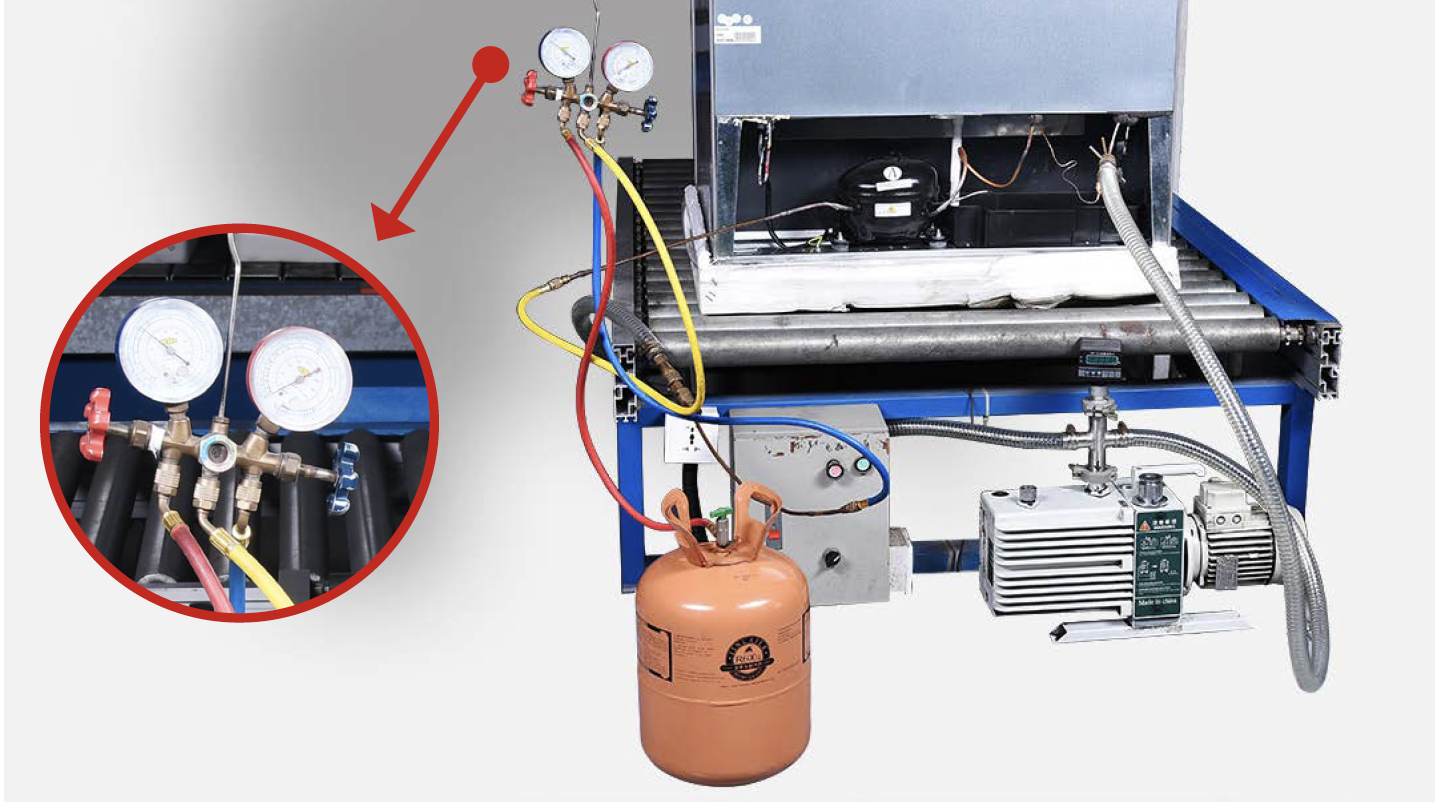
Step 9
Block processing pipe twice by locking pliers.

Step 10
Leave locking pliers on the second block and cut off the rest pipe by shaking.
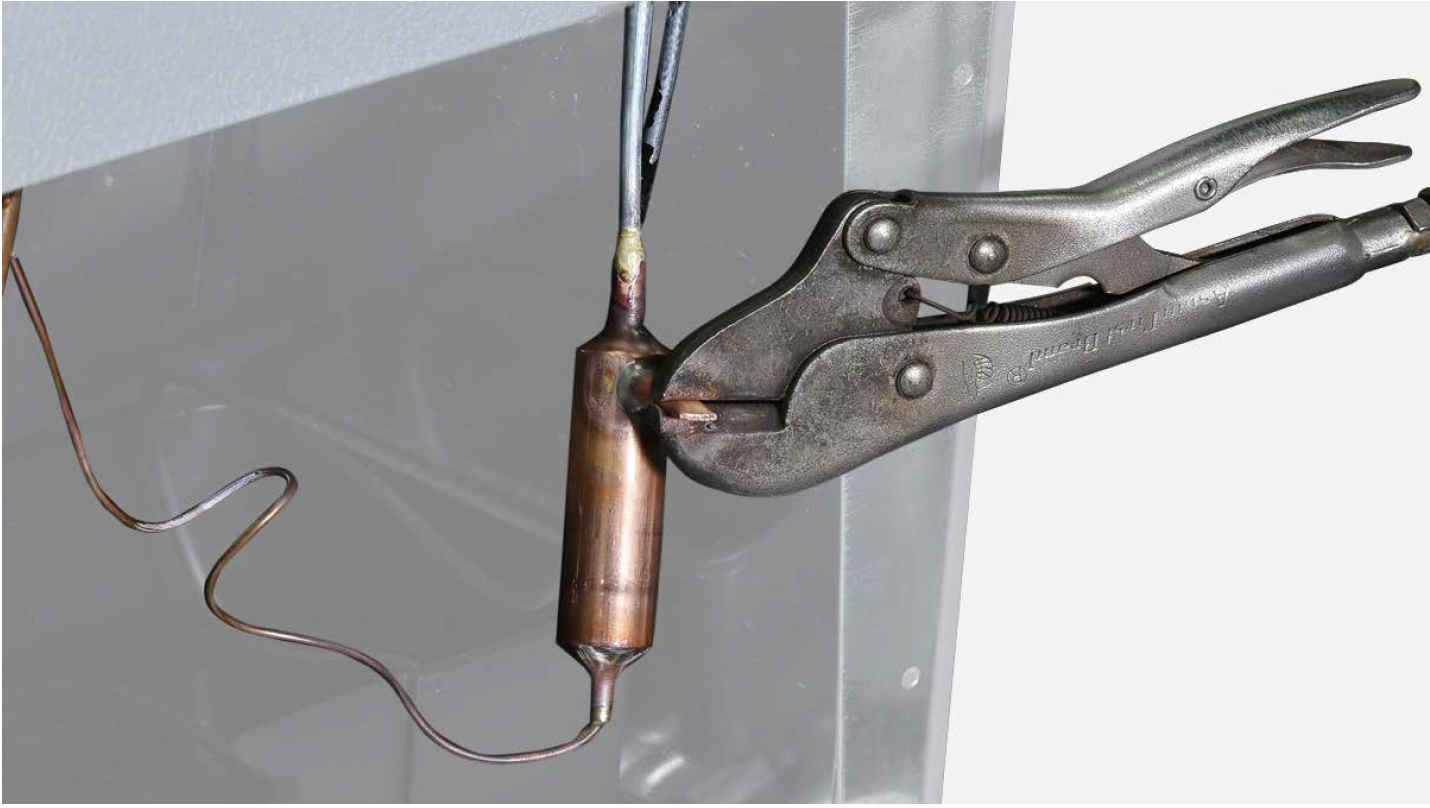
Step 11
Braze the ends and remove the pliers.


CHECK AND TEST 3
